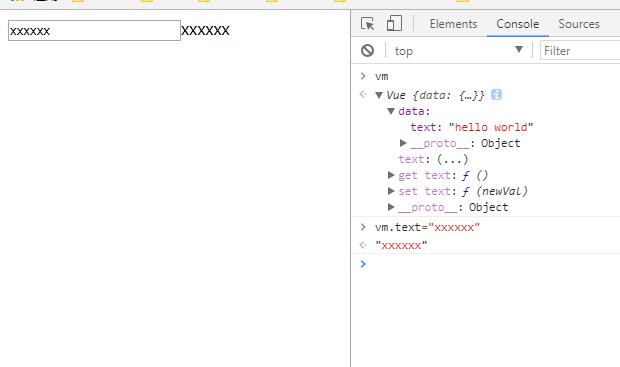Vue双向绑定简单实现
Posted Yuri 前端什么狮子
tags:
篇首语:本文由小常识网(cha138.com)小编为大家整理,主要介绍了Vue双向绑定简单实现相关的知识,希望对你有一定的参考价值。
<!DOCTYPE html> <html lang="en"> <head> <meta charset="UTF-8"> <title>双向绑定简单实现</title> </head> <body> <div id="app"> <input type="text" v-model="text"> {{ text }} </div> <script> function observe (obj, vm) { Object.keys(obj).forEach(function (key) { defineReactive(vm, key, obj[key]); }); } function defineReactive (obj, key, val) { var dep = new Dep(); Object.defineProperty(obj, key, { get: function () { // 添加订阅者watcher到主题对象Dep if (Dep.target) dep.addSub(Dep.target); return val }, set: function (newVal) { if (newVal === val) return val = newVal; // 作为发布者发出通知 dep.notify(); } }); } function nodeToFragment (node, vm) { var flag = document.createDocumentFragment(); var child; while (child = node.firstChild) { compile(child, vm); flag.appendChild(child); // 将子节点劫持到文档片段中 } return flag; } function compile (node, vm) { var reg = /\\{\\{(.*)\\}\\}/; // 节点类型为元素 if (node.nodeType === 1) { var attr = node.attributes; // 解析属性 for (var i = 0; i < attr.length; i++) { if (attr[i].nodeName == \'v-model\') { var name = attr[i].nodeValue; // 获取v-model绑定的属性名 node.addEventListener(\'input\', function (e) { // 给相应的data属性赋值,进而触发该属性的set方法 vm[name] = e.target.value; }); node.value = vm[name]; // 将data的值赋给该node node.removeAttribute(\'v-model\'); } }; new Watcher(vm, node, name, \'input\'); } // 节点类型为text if (node.nodeType === 3) { if (reg.test(node.nodeValue)) { var name = RegExp.$1; // 获取匹配到的字符串 name = name.trim(); new Watcher(vm, node, name, \'text\'); } } } function Watcher (vm, node, name, nodeType) { Dep.target = this; this.name = name; this.node = node; this.vm = vm; this.nodeType = nodeType; this.update(); Dep.target = null; } Watcher.prototype = { update: function () { this.get(); if (this.nodeType == \'text\') { this.node.nodeValue = this.value; } if (this.nodeType == \'input\') { this.node.value = this.value; } }, // 获取data中的属性值 get: function () { this.value = this.vm[this.name]; // 触发相应属性的get } } function Dep () { this.subs = [] } Dep.prototype = { addSub: function(sub) { this.subs.push(sub); }, notify: function() { this.subs.forEach(function(sub) { sub.update(); }); } }; function Vue (options) { this.data = options.data; var data = this.data; observe(data, this); var id = options.el; var dom = nodeToFragment(document.getElementById(id), this); // 编译完成后,将dom返回到app中 document.getElementById(id).appendChild(dom); } var vm = new Vue({ el: \'app\', data: { text: \'hello world\' } }); </script> </body> </html>

转载自:http://www.cnblogs.com/kidney/p/6052935.html 代码 解释 这里
以上是关于Vue双向绑定简单实现的主要内容,如果未能解决你的问题,请参考以下文章